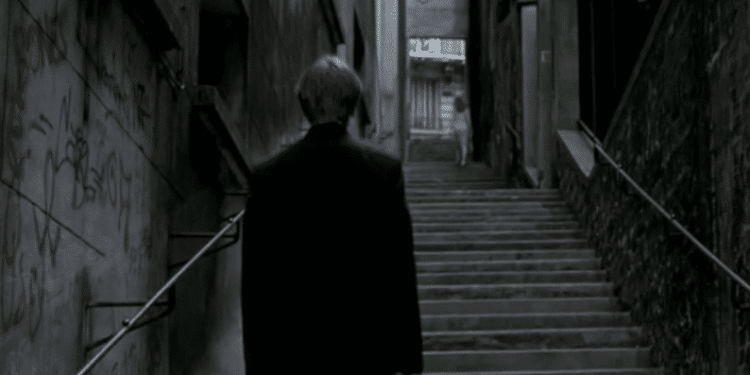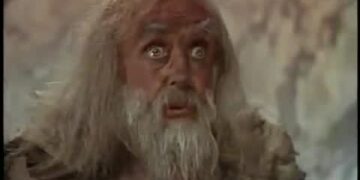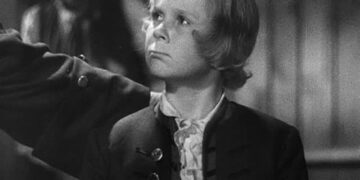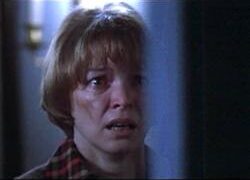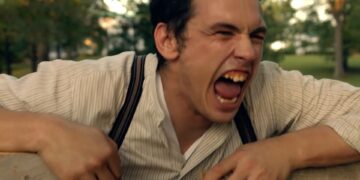“La Captive” is a 2000 film directed by Belgian filmmaker Chantal Akerman, which serves as an adaptation of Marcel Proust’s literary masterpiece “La Prisonnií¨re,” the fifth volume of his magnum opus “In Search of Lost Time.”
The novel, originally published in 1923, delves deep into themes of love, jealousy, memory, and the passage of time.
In adapting the book, Akerman, a self-proclaimed Proust enthusiast, sought to preserve the essence of the source material while imbuing it with her own unique cinematic vision.
The result is a film that explores the complexities of human relationships and emotions through the lens of auteur cinema, offering a fresh and contemporary take on a classic work of literature.
This comprehensive guide will provide an in-depth look at the various aspects of ‘La Captive,’ from its literary and cinematic origins to its characters, locations, and themes. Let’s embark on a journey through the world of Proust and Akerman, discovering the rich tapestry of their intertwined artistry.
Book summary: Exploring the literary masterpiece
“La Prisonnií¨re,” the fifth volume of Proust’s “In Search of Lost Time,” primarily focuses on the narrator’s relationship with his lover Albertine, whom he keeps captive in his Paris apartment.
The novel delves into the narrator’s obsessive love for Albertine, as well as his crippling fear of losing her. Through this exploration, Proust exposes the darker side of love, where desire and jealousy intermingle, leading the narrator to exert control over his lover and hold her captive, both physically and emotionally.
The book also touches upon themes of memory and the passage of time, as the narrator reminisces about his past and contemplates the fleeting nature of human existence. His memories and experiences serve as a means to examine the intricacies of human relationships and the human condition more broadly.
As the story unfolds, the reader is granted access to the narrator’s innermost thoughts and emotions, providing an intimate portrait of a man struggling with the complexities of love and the inexorable march of time.
Movie summary: Chantal Akerman’s adaptation and vision
In her film adaptation of “La Captive,” Chantal Akerman aims to capture the essence of Proust’s novel while offering her own unique interpretation of the story. The film follows the protagonist, Simon, as he obsessively monitors and controls his lover Ariane, whom he keeps captive in his Parisian apartment.
Akerman’s vision retains the novel’s exploration of desire, jealousy, and control, while also incorporating elements of her own filmmaking style.
The film is characterized by its slow pacing, long takes, and minimal dialogue, which serve to create an atmosphere of tension and unease that mirrors the protagonist’s inner turmoil.
Through her direction, Akerman provides a contemporary reinterpretation of Proust’s work, shedding new light on the novel’s themes and offering a fresh perspective on the classic tale of love, obsession, and captivity.
A parent’s guide to ‘La Captive’
While ‘La Captive’ is a thought-provoking and artistically rich work, parents should be aware that the film deals with mature themes, such as obsession, control, and jealousy, which may not be suitable for younger viewers.
The film contains scenes of a sexual nature and some nudity, as well as moments of emotional intensity that could be distressing for sensitive viewers.
Given the film’s subject matter and presentation, it is recommended for adult audiences or mature teens who can appreciate the complex themes and artistic vision of both Proust and Akerman. Parents should consider watching the film with their teen and engaging in a thoughtful discussion about the themes and issues presented in the story.
Understanding the timeline: When the story takes place
Both Proust’s novel and Akerman’s film adaptation are set during the early 20th century, capturing the mood and atmosphere of the Belle í‰poque era in Paris. This period was characterized by a general sense of optimism and progress, with advancements in the arts, literature, and technology shaping the cultural landscape.
However, beneath the surface of this apparent golden age, the story of ‘La Captive’ exposes the darker aspects of human nature and the complexities of love, serving as a reminder that even in times of prosperity, the human condition remains fraught with struggle and uncertainty.
Dive into the film’s locations
‘La Captive’ is set primarily in the protagonist’s Parisian apartment, which serves as both a refuge and a prison for the characters. The apartment’s opulent and meticulously decorated interior contrasts sharply with the emotional turmoil that unfolds within its walls, creating a sense of tension and unease.
In addition to the apartment, the film also features scenes set in various locations throughout Paris, such as parks, cafés, and boulevards, which serve to evoke the city’s unique atmosphere and provide a backdrop for the characters’ interactions.
These locations not only add visual interest to the film but also help to ground the story in its historical and cultural context.
Who’s who: Character analysis and relationships
The central character in ‘La Captive’ is Simon, a young man who becomes consumed by his love for Ariane, whom he keeps captive in his apartment. Simon’s obsessive desire for Ariane leads him down a dark path, as he struggles with his own insecurities and fears about losing her.
Ariane, the titular captive, is a complex and enigmatic figure, whose true thoughts and feelings remain largely hidden from both Simon and the audience. As the film progresses, Ariane’s character begins to reveal more of her inner self, challenging Simon’s perceptions and control.
In addition to Simon and Ariane, the film also features a supporting cast of characters who serve to illuminate the protagonists’ emotional states and add depth to the narrative. These characters include Simon’s confidante and accomplice, Franí§oise, and his former lover, Andrée, who provide insight into Simon’s motivations and past relationships.
Memorable quotes and dialogues
Throughout ‘La Captive,’ both the novel and the film, the dialogue is rife with memorable lines that capture the essence of the story and its themes. Here are a few notable quotes that stand out:
- “I was thinking that it is only when we love someone that we can see them as they really are.” – Simon
- “I cannot bear the thought of losing you, but I am terrified of holding you too close.” – Simon
- “We are all prisoners of our own desires, and only love can set us free.” – Ariane
- “The past is always with us, shaping our present and our future.” – Simon
These quotes not only encapsulate the emotional complexity of the characters and their relationships but also serve as a testament to the timeless nature of Proust’s themes and insights.
Imogen Cooper’s captivating soundtrack
The soundtrack for ‘La Captive,’ composed by Imogen Cooper, plays a vital role in establishing the film’s atmosphere and tone.
Featuring a mix of haunting piano melodies and somber orchestral arrangements, the music expertly underscores the emotional turmoil experienced by the characters and heightens the sense of tension and unease that pervades the film.
Cooper’s compositions not only complement Akerman’s vision, but also serve as a fitting tribute to Proust’s literary masterpiece, capturing the essence of the novel’s themes and transporting the audience into the world of ‘La Captive.’
Curiosities and behind-the-scenes facts
- Chantal Akerman was initially hesitant to adapt Proust’s work for the screen, fearing that it would be an impossible task given the novel’s dense and introspective nature. However, she ultimately decided to take on the project as a personal challenge and a means to explore the boundaries of cinematic storytelling.
- Akerman’s decision to cast Stanislas Merhar as Simon was based on the actor’s physical resemblance to Marcel Proust, as well as his ability to convey the character’s emotional complexity.
- The film’s slow pacing and long takes were inspired by Proust’s writing style, which often features lengthy, intricate sentences that mirror the flow of the characters’ thoughts and emotions.
- Akerman has stated that her goal in adapting ‘La Captive’ was not to create a faithful retelling of Proust’s novel, but rather to present her own interpretation of the story that would resonate with contemporary audiences.
Tips for cosplay and dressing like the characters
For fans of ‘La Captive’ looking to dress like their favorite characters, the following tips can help you achieve an authentic and stylish look:
- Simon: Opt for a well-tailored suit in dark colors, a white dress shirt, and a tie. Complete the look with polished dress shoes and slicked-back hair.
- Ariane: Choose elegant and sophisticated dresses in muted tones, paired with delicate jewelry and classic hairstyles.
- Franí§oise: Aim for a more casual look with a simple blouse, skirt, and comfortable shoes. Add a touch of elegance with tasteful accessories and a neat updo.
- Andrée: Emulate her bohemian style with flowing dresses, colorful scarves, and eclectic jewelry.
Remember to pay attention to the details and use reference images from the film to ensure accuracy in your costume.
Marcel Proust: A brief biography and his other works
Marcel Proust (1871–1922) was a French author best known for his monumental work “In Search of Lost Time,” a seven-volume novel that explores themes of memory, love, and the passage of time. Born in Paris, Proust began his writing career as a journalist and critic before devoting himself to his magnum opus.
In addition to “La Prisonnií¨re,” the other volumes of “In Search of Lost Time” include:
- “Swann’s Way” (1913)
- “Within a Budding Grove” (1919)
- “The Guermantes Way” (1920)
- “Sodom and Gomorrah” (1921)
- “The Fugitive” (1925, posthumously)
- “Time Regained” (1927, posthumously)
Proust’s work has had a lasting impact on literature and continues to be celebrated and studied today for its innovative narrative techniques and profound insights into the human condition.
Ending explained: Decoding the conclusion
The conclusion of ‘La Captive’ is deliberately ambiguous, leaving the viewer to grapple with the complexities of the characters’ emotions and the ultimate fate of their relationship.
The film’s open-ended nature invites reflection and interpretation, encouraging audiences to consider the implications of the story and the broader themes of love, obsession, and captivity.
In keeping with Proust’s literary style, Akerman’s film resists offering easy answers or resolutions, instead opting for a nuanced and thought-provoking exploration of the human experience that lingers long after the final frame.
Remakes, sequels, and spin-offs: The legacy of ‘La Captive’
While ‘La Captive’ has not spawned any direct remakes, sequels, or spin-offs, the film’s enduring impact and the continued fascination with Proust’s work have inspired countless adaptations, reinterpretations, and homages across various forms of media.
From theatrical productions and ballets to graphic novels and television series, the legacy of ‘La Captive’ and “In Search of Lost Time” continues to captivate and inspire artists and audiences alike, ensuring that the story’s timeless themes and insights will continue to resonate for generations to come.
Other media by Chantal Akerman
Chantal Akerman (1950–2015) was a Belgian filmmaker renowned for her innovative and experimental approach to cinema. In addition to ‘La Captive,’ her extensive body of work includes:
- “Jeanne Dielman, 23 quai du Commerce, 1080 Bruxelles” (1975)
- “News from Home” (1977)
- “Toute une nuit” (1982)
- “Golden Eighties” (1986)
- “No Home Movie” (2015)
Throughout her career, Akerman received numerous awards and accolades for her groundbreaking films, which continue to be celebrated and studied today as landmarks of avant-garde cinema.
Similar media to ‘La Captive’: Films, books, and series to explore
For those who enjoyed ‘La Captive’ and are interested in exploring similar works, the following films, books, and series offer comparable themes, styles, or subject matter:
- “Vertigo” (1958), directed by Alfred Hitchcock
- “The Piano Teacher” (2001), directed by Michael Haneke
- “In the Mood for Love” (2000), directed by Wong Kar-wai
- “The Remains of the Day” (1993), directed by James Ivory
- “Possession” (1981), directed by Andrzej Å»uÅ‚awski
In addition, readers may also enjoy exploring other works of literature that delve into themes of love, obsession, and memory, such as:
- “Wuthering Heights” by Emily Brontí«
- “Lolita” by Vladimir Nabokov
- “The End of the Affair” by Graham Greene
- “The Unbearable Lightness of Being” by Milan Kundera
Other works by Marcel Proust and their adaptations
In addition to “In Search of Lost Time,” Marcel Proust wrote several other notable works, including “Pleasures and Days” (1896), a collection of short stories and poems, and “Jean Santeuil” (1952, posthumously), an unfinished novel that prefigured many of the themes and ideas later explored in his magnum opus.
Proust’s work has inspired numerous adaptations and reinterpretations across various media, such as Harold Pinter’s play “The Proust Screenplay” (1972), which sought to condense the entirety of “In Search of Lost Time” into a single film script, and Raíºl Ruiz’s film “Time Regained” (1999), which adapts the final volume of the novel.
Book club questions for ‘La Captive’ and Proust’s original work
- How does the film adaptation of ‘La Captive’ differ from the novel, and what do these differences reveal about the respective visions of Chantal Akerman and Marcel Proust?
- In what ways does ‘La Captive’ explore the darker aspects of love, and what insights does the story offer into the nature of desire, obsession, and control?
- How do the film’s visual style and pacing contribute to its overall atmosphere and impact?
- What role do memory and the passage of time play in the story, and how do these themes relate to the characters’ emotional states and relationships?
- How do the various locations featured in ‘La Captive’ serve to evoke the mood and atmosphere of early 20th-century Paris, and what role do these settings play in the story’s overall narrative?
Video games inspired by ‘La Captive’ and Proust’s universe
While there are no specific video games directly inspired by ‘La Captive’ or Proust’s work, the themes and ideas explored in these stories have influenced a number of narrative-driven games that delve into complex human emotions, relationships, and memories. Some examples include:
- “Gone Home” (2013), developed by Fullbright
- “Firewatch” (2016), developed by Campo Santo
- “What Remains of Edith Finch” (2017), developed by Giant Sparrow
- “Life is Strange” (2015), developed by Dontnod Entertainment
These games, much like ‘La Captive,’ offer immersive and thought-provoking experiences that challenge players to engage with the complexities of the human condition.
A travel guide to visit ‘La Captive’ film locations
For those wishing to explore the locations featured in ‘La Captive,’ a trip to Paris offers the opportunity to visit the various parks, cafés, and boulevards that serve as the backdrop for the film. Key locations to consider visiting include:
- The protagonist’s apartment, which can be found in the elegant 16th arrondissement.
- The Jardin du Luxembourg, a picturesque park that features prominently in the film.
- The íŽle de la Cité, where several key scenes take place.
- The historic Montmartre district, which offers a glimpse into the artistic and bohemian side of Paris during the Belle í‰poque.
Visiting these locations not only allows fans of ‘La Captive’ to immerse themselves in the world of the film but also provides a unique opportunity to explore the rich history and culture of Paris more broadly.
Conclusion: The enduring impact of ‘La Captive’ and Marcel Proust’s work
In conclusion, ‘La Captive’ offers a fascinating exploration of the complexities of love, obsession, and memory, providing a fresh and contemporary take on Marcel Proust’s literary masterpiece.
From its captivating performances and striking visuals to its haunting soundtrack and thought-provoking themes, the film serves as a testament to the enduring impact and relevance of Proust’s work, as well as the boundless possibilities of cinematic storytelling.


